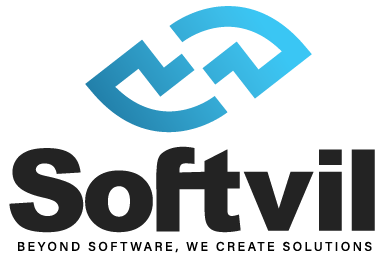In the fast-paced world of startups, delivering a high-quality product swiftly is often the key to survival. However, maintaining a robust software quality assurance (QA) process while trying to push out new features can be challenging. Many startups opt to outsource their QA to specialized QA outsourcing companies to streamline their operations, reduce costs, and leverage external expertise. However, the integration of outsourced QA into a startup’s workflow requires careful planning and execution to ensure seamless collaboration and optimal results.
Onboarding the QA Team

The first step in integrating outsourced QA into your startup’s workflow is the effective onboarding of the QA team. This process involves not just a simple introduction but a thorough integration into the company’s culture, processes, and goals.
Steps to Introduce and Integrate the Outsourced QA Team
- Initial Orientation and Introduction: Start by introducing the outsourced QA team to the in-house team. This can be done through a series of meetings or a dedicated onboarding session. During this time, it’s crucial to provide an overview of your startup’s mission, product, and the role the QA team will play in your success.
- Providing Access to Tools and Documentation: Ensure that the QA team has access to all the necessary tools, documentation, and software. This includes version control systems, project management tools, and any proprietary software they’ll need to test.
- Assigning a Point of Contact: Designate a point of contact within your startup who will be responsible for liaising with the QA team. This person should have a deep understanding of your product and be able to answer questions, provide feedback, and facilitate communication between teams.
- Setting Expectations: Clearly define what you expect from the outsourced QA team. This includes deadlines, quality standards, and communication protocols. Setting these expectations early on will help prevent misunderstandings and ensure that everyone is on the same page.
Importance of Clear Communication and Setting Expectations
Clear communication is the cornerstone of a successful partnership with an outsourced QA team. It’s essential to establish regular communication channels and schedules to keep everyone informed and aligned. For instance, daily stand-up meetings, weekly progress reports, and regular check-ins can help maintain a strong connection between your in-house team and the QA outsourcing company. Additionally, using collaborative tools like Slack, Jira, or Trello can facilitate real-time communication and ensure that everyone stays in sync.
Setting expectations is equally important. Whether it’s the timeline for delivering test results or the level of detail required in bug reports, clearly outlining what you need from the QA team will help them meet your standards. This is particularly crucial in a startup environment, where timelines are often tight, and the margin for error is slim.
Defining Processes and Communication Channels

Once the QA team is onboarded, the next step is to define the processes and communication channels that will govern the collaboration. This involves establishing workflows, reporting structures, and a regular communication schedule that ensures the smooth flow of information between the internal and external teams.
Establishing Workflows and Reporting Structures
To integrate the QA outsourcing team effectively, it’s essential to create a structured workflow that defines how tasks will be assigned, tracked, and completed. This might involve using Agile methodologies like Scrum or Kanban, where the QA team is involved in sprint planning, daily stand-ups, and retrospectives. By embedding the QA team into your existing workflows, you can ensure that they are aligned with your development cycles and can provide timely feedback.
Reporting structures are also critical. The outsourced QA team should know who they report to, how to escalate issues, and what the process is for delivering test results. Regular reporting can take the form of daily updates, weekly summaries, or sprint reviews, depending on your startup’s needs.
Tools and Platforms for Collaboration
The right tools can make or break the collaboration between your in-house team and the outsourced QA team. Here are some essential tools that can facilitate smooth communication and workflow integration:
- Project Management Tools: Tools like Jira, Trello, or Asana allow you to manage tasks, track progress, and collaborate on issues in real-time. These platforms also enable you to assign tasks, set deadlines, and monitor the QA team’s performance.
- Communication Tools: Slack, Microsoft Teams, or Zoom can be used for instant messaging, video calls, and regular check-ins. These tools are essential for maintaining open lines of communication and ensuring that any issues can be addressed promptly.
- Test Management Tools: Tools like TestRail or Zephyr can help manage test cases, track defects, and report on test results. These platforms allow the QA team to document their findings and provide detailed reports to your development team.
- Continuous Integration (CI) Tools: Jenkins, CircleCI, or Travis CI are critical for automating the testing process and integrating it into your development workflow. These tools help ensure that tests are run continuously, and any issues are identified early in the development process.
Monitoring Progress and Performance

Once the QA outsourcing team is integrated into your workflow, it’s important to monitor their progress and performance to ensure they meet deadlines and maintain high-quality standards. This can be achieved by tracking key performance indicators (KPIs) and establishing regular feedback loops.
Tracking the Performance of the Outsourced QA Team
To effectively monitor the performance of the outsourced QA team, consider the following KPIs:
- Test Coverage: Measure the extent to which the QA team is covering the application’s features and functionalities. High test coverage indicates a thorough testing process, which reduces the risk of undetected bugs.
- Defect Detection Rate: Track the number of defects found by the QA team compared to the number of defects found post-release. A high defect detection rate suggests that the QA team is effectively identifying issues before they reach production.
- Turnaround Time: Monitor how quickly the QA team can test new features or bug fixes and provide feedback to the development team. A quick turnaround time is essential in a startup environment where rapid iteration is often required.
- Test Execution Time: Evaluate how long it takes for the QA team to execute their tests. This can help identify bottlenecks in the testing process and determine if additional resources or optimizations are needed.
Using KPIs and Regular Feedback Loops
Regular feedback loops are essential for maintaining high standards in software QA testing. Schedule regular meetings to review the QA team’s performance, discuss any challenges, and make necessary adjustments. These feedback sessions should be constructive, focusing on continuous improvement rather than just pointing out issues.
Additionally, consider conducting regular retrospectives at the end of each sprint or project phase. These retrospectives can help identify what went well, what didn’t, and how the process can be improved moving forward. By maintaining an open line of communication and fostering a culture of continuous improvement, you can ensure that the QA outsourcing team remains aligned with your startup’s goals.
Handling Feedback and Iterations

In a startup environment, where the product is often evolving rapidly, it’s crucial to have a process in place for efficiently handling feedback and making iterative improvements. This is where continuous integration and testing become invaluable.
Incorporating Feedback Efficiently
When feedback is received from the QA team, it’s important to prioritize it based on the severity of the issues and their impact on the product. High-priority bugs should be addressed immediately, while lower-priority issues can be scheduled for later iterations. This requires close collaboration between the QA and development teams to ensure that feedback is incorporated in a timely and efficient manner.
The Role of Continuous Integration and Testing
Continuous integration (CI) is a practice that involves integrating code changes into the main branch frequently and running automated tests to catch bugs early. By integrating the outsourced QA team into your CI pipeline, you can ensure that testing is done continuously and that feedback is provided in real-time.
CI tools like Jenkins or CircleCI can automatically run tests whenever new code is pushed, allowing the QA team to quickly identify any issues and provide feedback to the developers. This approach not only speeds up the development process but also ensures that the product remains stable and bug-free as it evolves.
Reviewing and Refining the Partnership

As your startup grows and evolves, it’s important to periodically review the relationship with your QA outsourcing partner to ensure ongoing alignment with your goals.
Periodic Reviews and Assessments
Conducting regular reviews of the partnership can help identify any areas where improvements are needed. These reviews should focus on the quality of the QA team’s work, their ability to meet deadlines, and their overall contribution to your startup’s success.
Adjusting the Engagement Model
As your startup scales, you may need to adjust the engagement model with your QA partner. This could involve expanding the scope of the QA team’s responsibilities, increasing the number of testers, or transitioning to a more integrated partnership where the QA team is more deeply embedded in your startup’s operations.
By regularly reviewing and refining the partnership, you can ensure that the QA outsourcing team continues to meet your startup’s needs as it grows.
Conclusion
Integrating outsourced QA into your startup’s workflow can be a game-changer, allowing you to deliver high-quality products while staying focused on your core business goals. By following best practices in onboarding, defining processes, monitoring performance, and handling feedback, you can ensure that the QA outsourcing team becomes an integral part of your startup’s success. Regular reviews and adjustments to the partnership will further ensure that your collaboration with QA outsourcing companies remains aligned with your evolving needs, setting the stage for continued growth and success.
FAQs
QA outsourcing involves hiring external companies to handle your software quality assurance tasks. It benefits startups by providing access to specialized expertise, reducing costs, and allowing your in-house team to focus on core business activities.
Establish clear communication channels, set regular check-ins, and use collaborative tools like Slack or Jira. Designate a point of contact in your startup to manage communication and ensure alignment.
Use project management tools like Jira or Trello, communication platforms like Slack or Microsoft Teams, and test management tools like TestRail. Continuous integration tools like Jenkins or CircleCI are also valuable for seamless collaboration.
Track key performance indicators (KPIs) such as test coverage, defect detection rate, turnaround time, and test execution time. Regularly review these metrics to ensure the team meets your quality standards.
Prioritize feedback based on severity and impact. Use continuous integration practices to implement changes quickly, and maintain close collaboration between your development and QA teams for efficient iterations.
About Softvil
Softvil is a dynamic technology partner specializing in empowering startups with innovative software solutions and expert guidance. With a deep understanding of the unique challenges that startups face, Softvil combines cutting-edge technology with agile methodologies to help emerging businesses scale quickly and efficiently. Our expertise spans software development, quality assurance, and product management, enabling startups to bring their ideas to life while maintaining high standards of quality and performance. At Softvil, we are committed to driving startup success through tailored solutions that align with your vision and growth objectives.

